In most Western countries, we hunt high and low for the most comfortable and best mattress we can find.
We buy our beds at a convenient height so it’s easy to get in and out of.
Yet, over in Japan, Western-style beds are rare and are only just starting to be more commonplace. If you’re wondering do all Japanese people sleep on the floor?
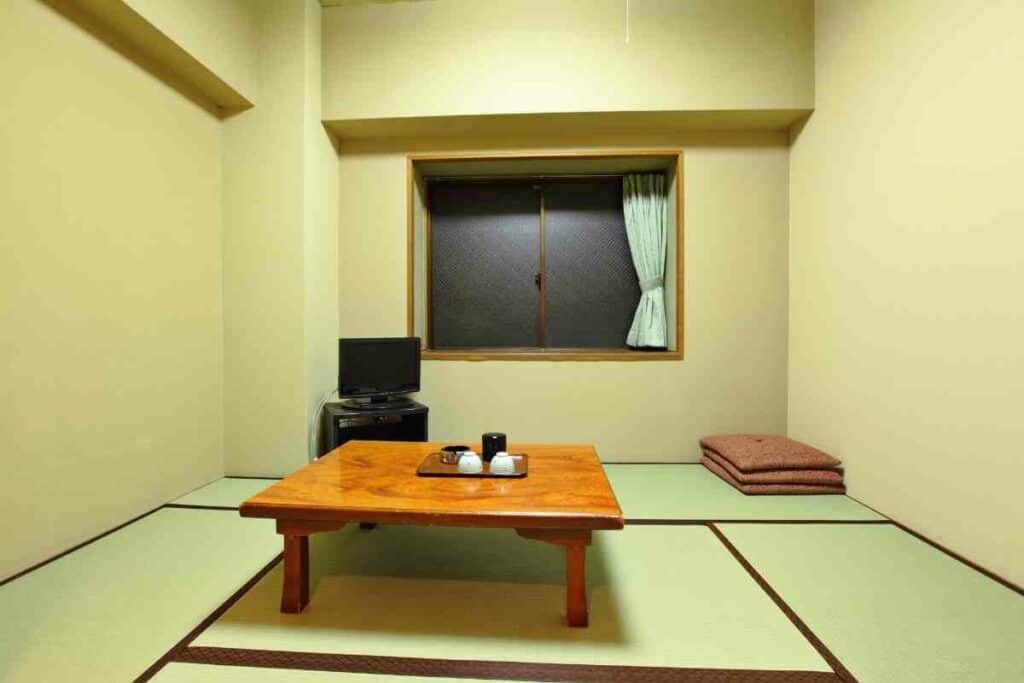
The quick answer is no, not all Japanese people do sleep on the floor – however many (most) do!
Let’s take a look at Japan’s floor-sleeping history and why so many people choose to get their 40 winks this way.
Table of Contents
The history of floor sleeping in Japan
Sleeping on the floor is deeply rooted in the history of Japan.
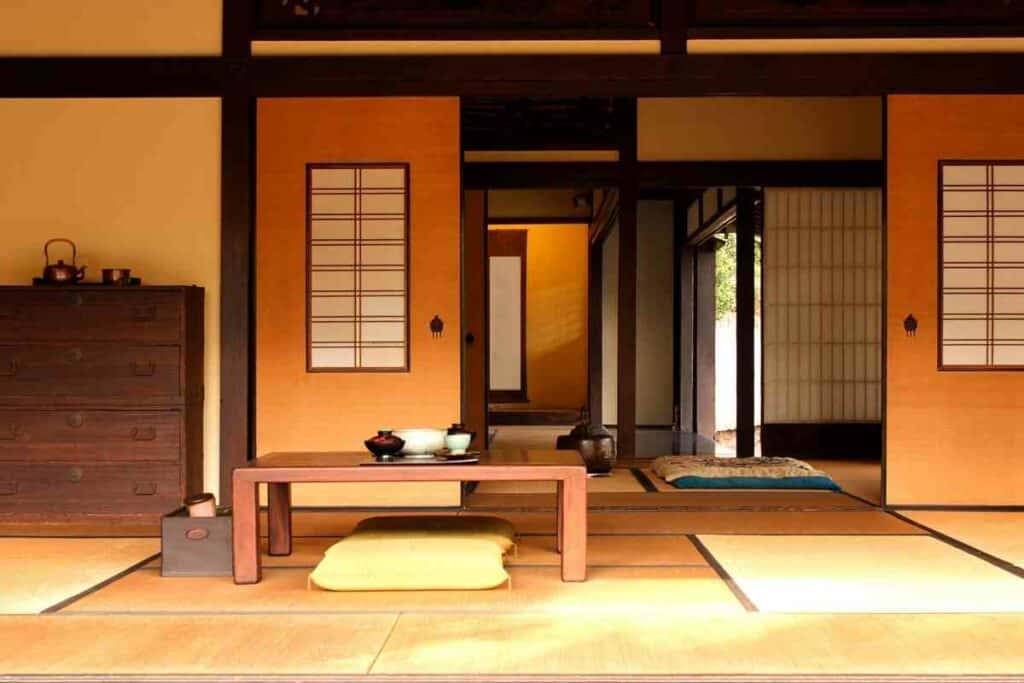
It is a tradition that has existed for centuries and there is evidence of this practice as far back as the 10th century.
Initially – It’s believed that hemp mats were laid on the floor for sleep then during Nara times, those with more money began adding cushions to their mats.
In Medieval times, covers were added too.
Though things have progressed and advanced in many areas since then, the tradition of sleeping on floor mats is still going strong.
Tatami mats
A tatami mat is made from rush grass that’s dried and woven and then sewn over a core made of rice straw.
The mat is firm yet gentle and has existed for many centuries.
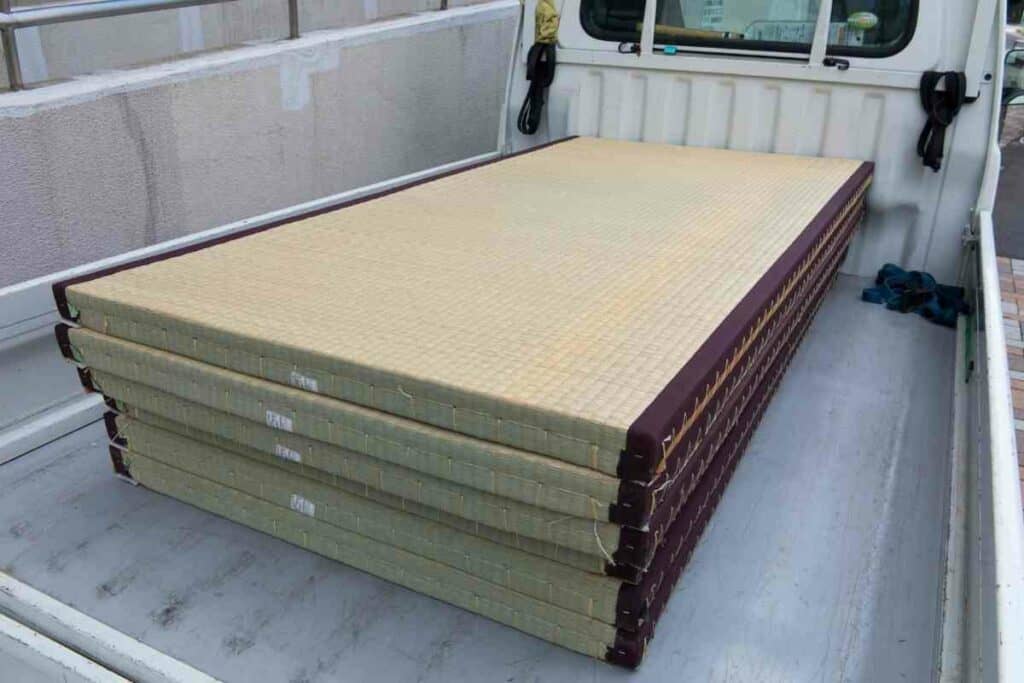
In most Japanese homes, even modern ones, there is typically one room that’s kitted out with tatami mats.
It’s an important part of Japanese culture and heritage and Japan, on the whole, loves keeping its traditions and links to the past.
Even families who have adopted more western practices (like a western-style dining table) still typically have a tatami room somewhere in their home.
If you’re thinking that tatami flooring is hard and uncomfortable, you’d be wrong.
It isn’t like sleeping on a hardwood floor, there is much more give in it. What’s more, futons make sleeping even more comfortable on top.
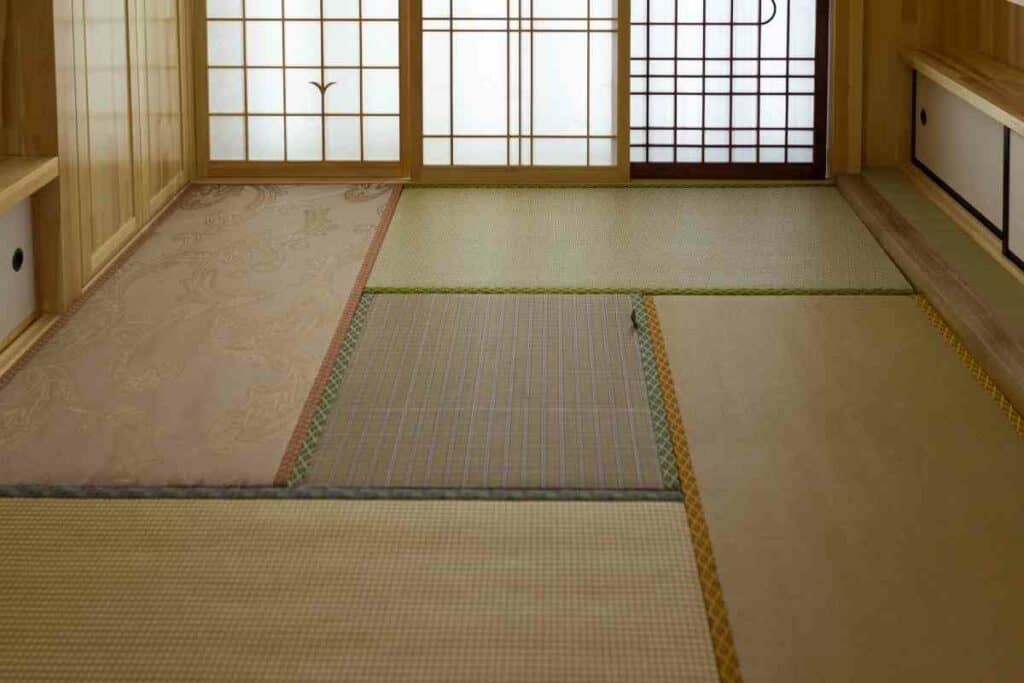
Don’t be confused, though, a Japanese futon isn’t like its Western namesake. Rather, it’s a 3- to 4-inch-thick roll-up mattress that can be easily stored away in a closet during the daytime.
Heads Up! Though this tatami mat and sleeping on the floor tradition does still exist, there has been a decline steadily over the last century and a half.
With influences coming in from overseas, it’s no surprise that more and more Japanese folk are leaning towards more westernized home interiors.
One reason is that tatami floors are particularly hard to clean (and Japanese people love cleanliness).
What about bedding?
Though many Japanese people might opt for typical Western bedding and pillows, lots do maintain the tradition of using a soba gara makura pillow.
Rather than being stuffed with cotton or feathers, this type of pillow contains buckwheat husks. These feel different when you’re lying on them.
They’re firmer, a little spiky and they can be noisy.
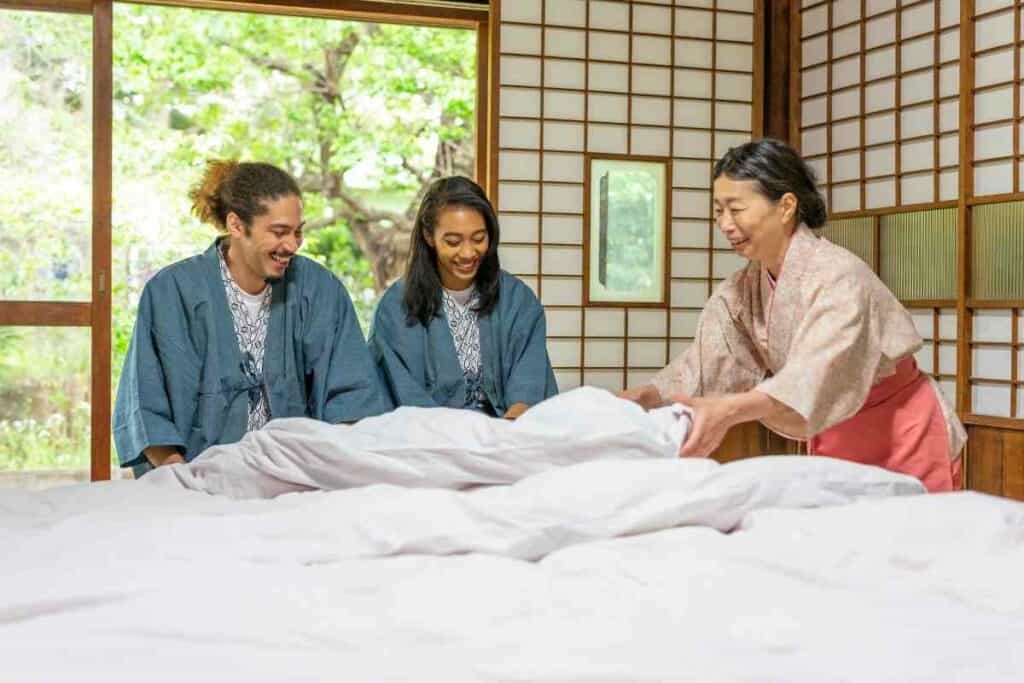
The pillow has a fabric cover that’s a sleeve.
It’s open on both sides and is machine washable. Usually, these are made from cotton that’s been dyed with a vegetable dye.
Since the pillows contain buckwheat hulls, they should be put outdoors every now and then to air them and allow any moisture that’s been absorbed to evaporate.
In Terms of Covers – A traditional Japanese blanket is called a kakefuton or kakebuton. This is a thin duvet-like cover that is made using silk fibers. Silk means it is adaptable to the weather and you won’t get too hot or too cold depending on the season.
Why is sleeping on the floor a good idea?
Despite the steady decline, there are still lots of good reasons why sleeping on the floor is a good idea.
Let’s look at them.
It’s cheaper – no need for expensive beds or mattresses
Beds are expensive and so are mattresses.
When you add up the cost (and include things like bedding and pillows), it’s easy to rack up hundreds of dollars.

Sleeping on a futon with a bedding set is much cheaper – and you don’t need to manipulate awkward furniture up stairwells and through narrow doorways either!
It saves space – rooms can be used for other things
Sleeping in the Japanese traditional way saves a lot of space.
Japan is notoriously tight on space and so their way of sleeping reflects this.
Being able to put away your bed in the morning means that a room can have a different purpose during the daytime.
It’s easier to have guests – roll out a spare futon and you’re good to go
Having guests over to stay is a lot easier in Japan.
There’s no need for a guest room or sleeping on the couch.
Having an extra futon to hand is useful for this but because these are so small, many people can bring their own when they come to stay!
They’re safer – earthquakes and falls out of bed aren’t as dangerous
For Japanese people, earthquakes are terrifying and frequent.
When there’s an earthquake at night, being on the floor with no furniture around is the best possible arrangement.

Nothing will move and hit you and you’ll be able to escape easily should you need to.
Sleeping on the floor is also safer for children and little ones as there’s no way they can injure themselves by falling out.
The health reasons why choosing to sleep on the floor is good
Having a comfy mattress is a new concept in the grand scheme of things.
Before the likes of springs and memory foam, our ancestors managed just fine.
Many people report that sleeping on the floor improves existing back pain.
Without the sinking of a soft mattress, the body is aligned at the neck, shoulders, back, and hips, which means less pain.
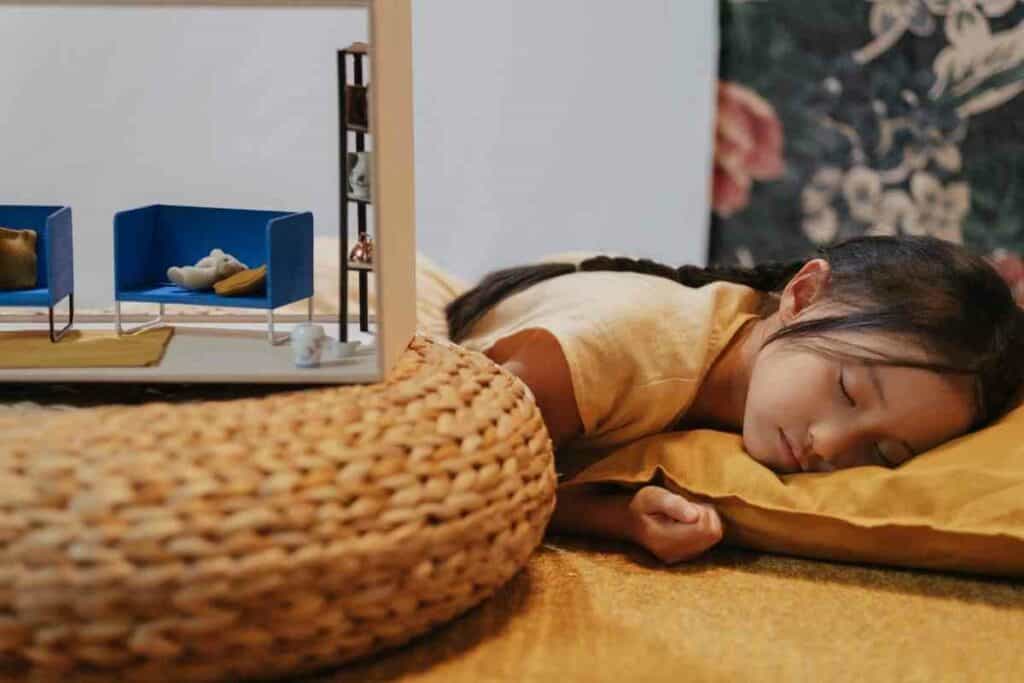
Humans have been sleeping on the ground forever – like our close relatives the apes still do.
It’s Easy to Forget – Our bodies are perfectly capable of sleeping on hard surfaces. Without the cushioning that a mattress has, our body will quickly adapt to find a natural alignment and posture.
The human body will adapt to floor sleeping quickly. The pressure will be distributed well; it will be well-aligned, and the blood flow will be unobstructed.
Some people even report increased energy levels after switching to sleeping on the floor.
The downsides of sleeping on the floor
Ok, so there are some negatives of choosing to sleep on the floor too.
If you’re young, fit, and healthy, you’ll likely have no problems.
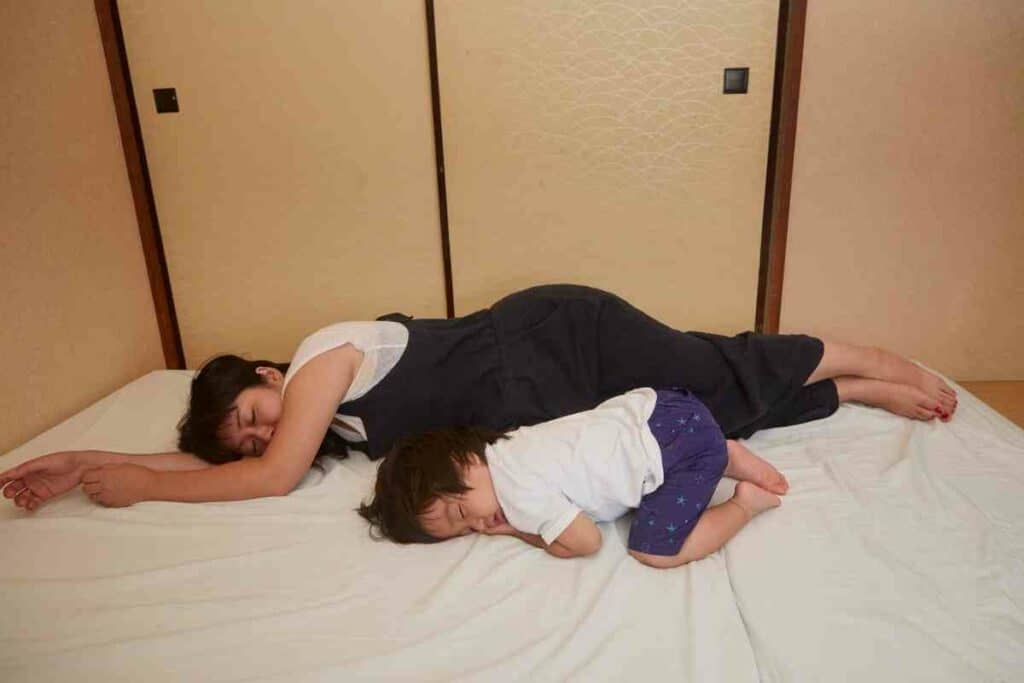
But what if you’re older or infirm?
Getting down on the floor will become more difficult with age.
However, older Japanese people are much more accustomed to this – especially because they eat sitting on the floor too – and so will likely be able to sleep on the floor longer than their Western counterparts will.
The temperature – it can get cold
Japan does get cool in the winter.
Although sleeping on the floor in summer is welcome as it’s the coolest place to be. However, in winter it will be cooler being on the floor.
Thankfully, tatami mats are pretty insulating.
You shouldn’t sleep on the floor with anything other than tatami mats as the flooring. A concrete floor or a wood floor would be very cold indeed.
Cleanliness is important
Sleeping on the floor is probably not going to be an issue if you’re in Japan or if you’re as clean and tidy as Japanese people are.
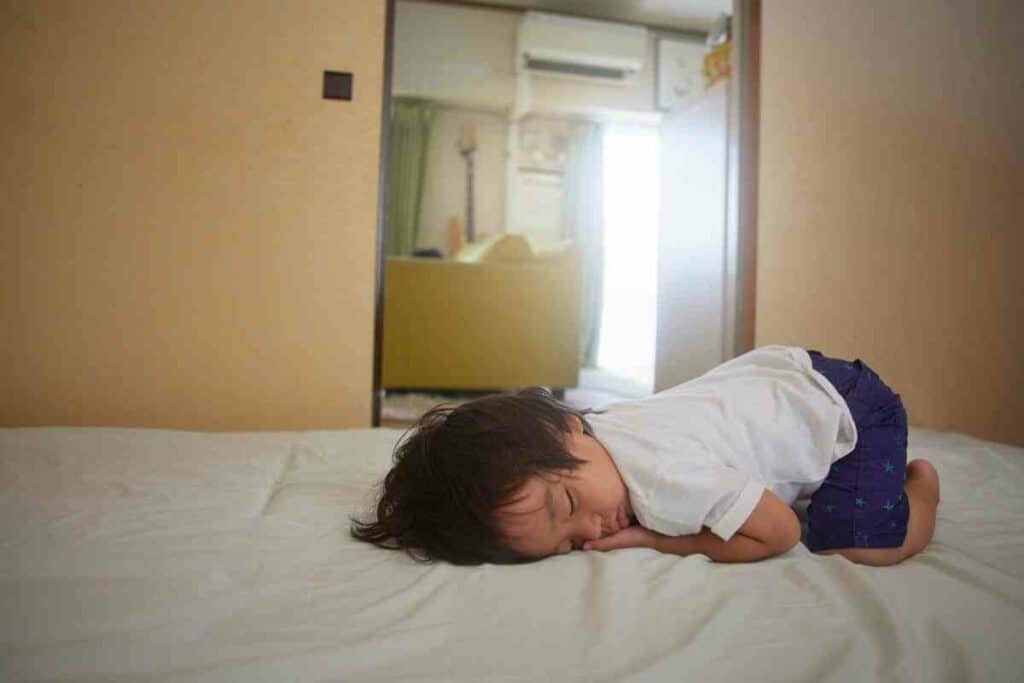
However, being on the floor means you’re closer to any potential dirt, allergens, and dust that have landed there.
If you don’t keep your floor clean, sleeping on it won’t be sanitary. There are also more bugs around!
It’s more effort to sleep on the floor Japanese-style
There’s nothing quite like getting into bed at night but it’s a lot more effort if you have to take your bed out of the closet and set it up each time.
It’s also more effort to put it away again in the morning.
Final thoughts on do all Japanese people sleep on the floor
As we’ve explored, not all Japanese people do sleep on the floor – especially since international travel and the internet have enabled people to see how other cultures live and sleep.
That said, many Japanese people still do sleep on the floor and since they’re generally lovers of tradition, it’s unlikely that this way of sleeping will die out completely.
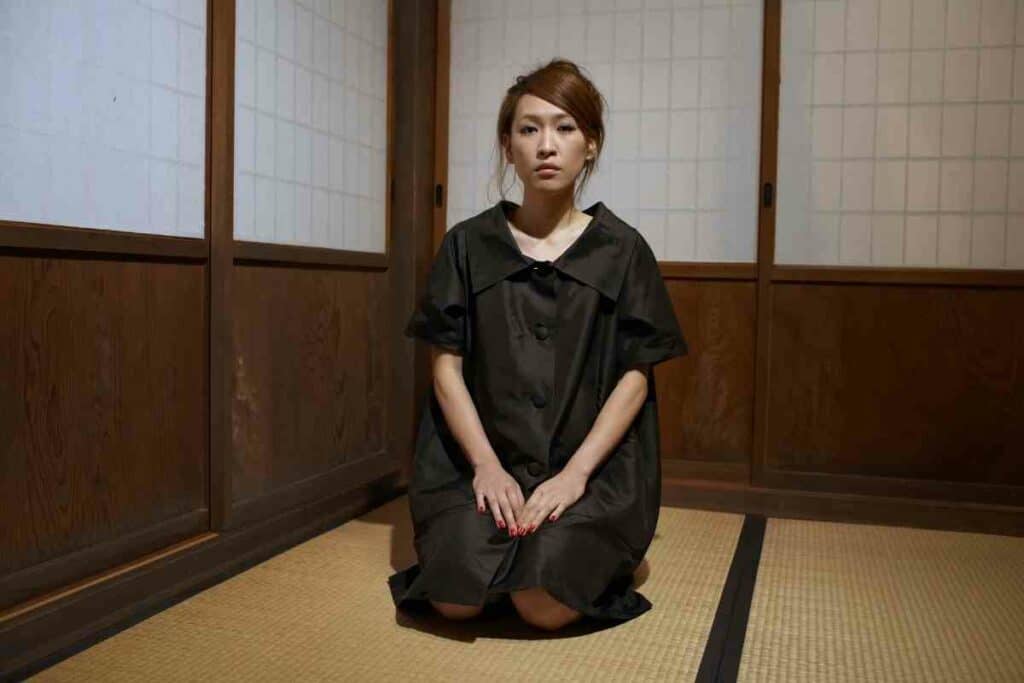
Sleeping on the floor is actually good for you and once you’ve got used to it, isn’t actually uncomfortable at all.
It can help with posture and back pain. However, you do need to make sure you’re in a clean environment so that you’re not breathing in dust or other particles from the floor.
If you’re coming to Japan, it’s a really great idea to try out the Japanese way of sleeping.
Most modern hotels will have options to have Western-style beds but since you’re in Japan, you should probably try at least one night doing it the traditional way.
You never know, you might be a convert!
- 12 Things Tourists Should NEVER Say in Japan
- Kissing Robot: Exploring the Popularity of the Chinese Kissing App
- Unlocking the Secret Dating Rituals Only Locals Know in Japan
- Samurai Armor: Ancient Protection for Japan’s Elite Warriors
- 10 Amazing Facts About Schools in Japan: Unique Traditions and Educational Practices
- Where can you see snow monkeys in Japan: Best locations and viewing tips









